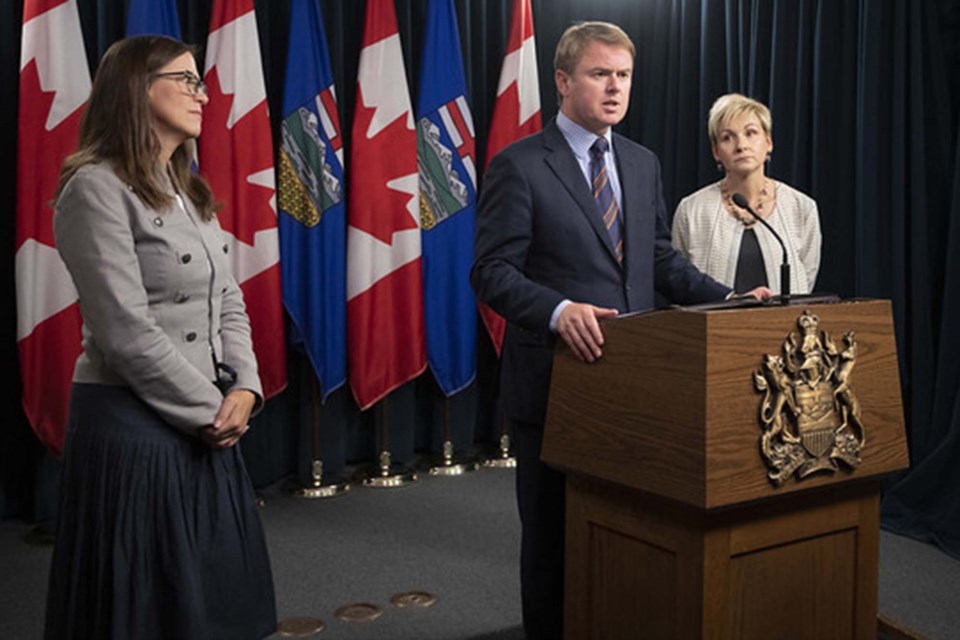The second phase of a provincial program is unlikely to bring any new nurse practitioners into St. Albert, but it's a step toward recognizing the role they play in communities across Alberta, says the vice president of their provincial association.
On July 21, the Alberta government announced it will spend $3.1 million on Phase 2 of its Primary Care Network (PCN) Nurse Practitioner Support Program, which will support up to 25 nurse practitioner positions in PCNs across the province, in the hope of providing more timely access to health care.
Anne Summach, vice president of the Nurse Practitioner Association of Alberta, said the addition of more positions will make for better access to health care for patients.
“It is a bit of a half-effective method, but at the same time [we] do appreciate the government's desire to continue to expand nurse practitioners in primary care, so we want to be as supportive as possible while encouraging optimization of their plan to remove further barriers,” Summach said.
Nurse practitioners [NPs] are registered nurses with advanced education. They have the ability to assess, diagnose, order tests, and prescribe medicines, refer to specialists, and do minor procedures in office like a family physician would.
“Comparing [nurse practitioners] to physicians who work in the community – our roles are really identical. The only difference is that the physicians have slightly different types of training … We have similar years of teaching, just a slightly different approach,” said Summach.
Shanlyn Cunningham, communications co-ordinator for the St. Albert Primary Care Network, said in an email the city's PCN does not currently offer a nurse practitioner program.
Primary Care Networks offer a multi-professional approach to primary care, said Summach.
“The intent is for nurse practitioners to have sort of a distinct role and autonomy in providing care within that role, whatever it is that they've expressed an interest in addressing in their Primary Care Network area,” she explained.
A benefit to the program is the distinct funding set aside for NPs. The program also recognizes the value NPs bring, and allows for a targeted approach – NPs will be sent to populations that will benefit from having them, said Summach.
It isn’t just rural locations that could benefit from having NPs. Summach said there is a need for NPs in cities, too, especially in areas with low physician availability.
There is also a huge need for female providers and many nurse practitioners are female.
Summach ran a clinic in Edmonton which closed due to funding cuts by the government. When it closed, she had to find primary-care providers for around 800 senior citizens, many of whom wanted female providers. At the time, the College of Physician and Surgeons Association website showed only three female providers taking on new patients.
According to the college's website, St. Albert currently has three female doctors accepting new patients.
“When people say we don't need more providers in the cities, it's not true. I think there's need everywhere, but I recognize there's a very unique need in some of the outlying rural and remote areas,” she said.
If there was a lack of primary care in St. Albert, Summach said, having an NP could expand care by the panel numbers the NP could tolerate.
“I think it's [somewhere] around 1,500 people [who] could be served by that nurse practitioner. There's definitely a role in cities and in small suburban communities for nurse practitioners to do primary care,” she said.
Nurse practitioners are typically paid a salary, instead of a fee for service. This means they can spend more time with patients, and they don’t have to have the “one problem for this visit” approach many physicians have been forced into by their funding models, she explained.
Summach, who is also the co-ordinator of the nurse practitioner program at the University of Alberta, said she has reached out to primary care networks in areas she knows she has students from to encourage them to consider applying so those students may have roles they can slide into when they complete the program.
“We have students coming from the Morinville area. I was hoping that the PCN out there would consider applying for a position, because students who are from the area are much more likely to stay and provide care in the area,” she said.
The limiting factor to having more NPs in communities is the way the support program is currently set up and legislative issues.
“Morinville or St. Albert as a whole can't say to themselves, 'We need some NPs here,' and then just hire an NP and have that NP bill the government for their services. There's no process for that to occur,” she said.
Summach said the association is actively lobbying the government to expand funding models and other options that would allow for NPs to have independent practices.
The health minister’s office did not respond to a request for an interview.
In an emailed statement, Morinville-St. Albert MLA Dale Nally said he is hopeful about the impact of increased nurse practitioners in Alberta, especially in rural and under-served locations.
“These health experts have been historically under-used in our primary-care system and I am glad to see this investment in their work,” he said.
Under the program, PCNs have until Aug. 27 to submit an expression of interest. In the application, PCNs need to outline how a nurse practitioner could address one or more priority concerns in their area.
These concerns include how an NP could increase access to primary health-care services after hours, on weekends, or in remote areas; meet unmet demands for primary health-care service; provide care to under-served populations; or support chronic disease management.
Phase 1 of the support program began in 2019. Currently, 29 of the 40 PCNs in the province are participating. A total of 51 nurse practitioners are currently part of the program.
There are about 730 nurse practitioners in the province working for Alberta Health Services or Primary Care Networks.




